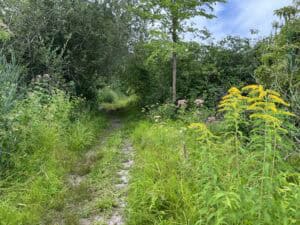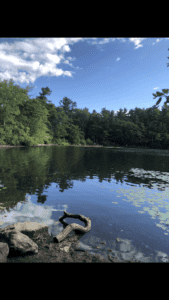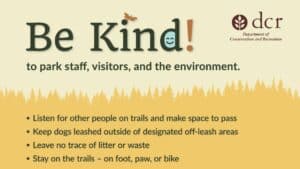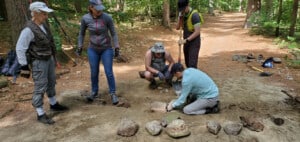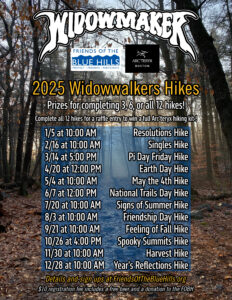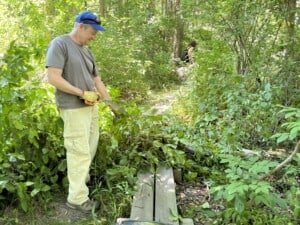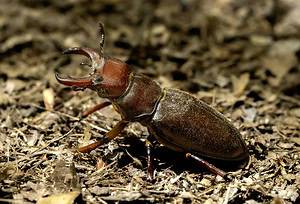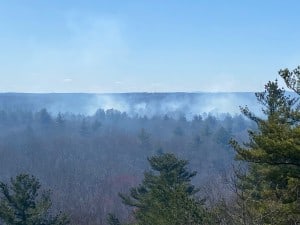 In some of our recent posts on deer impacts in the Blue Hills, some people commented that they would like to see data on the deer population and the effects on local plant species. The Massachusetts Department of Conservation and Recreation will be conducting research on deer populations for the next couple years. In addition, it turns out that Thomas J. Rawinski from the U.S. Department of Agriculture, Forest Service has conducted a reconnaissance assessment of how deer browsing has affected plant populations on Chickatawbut Hill. His conclusions are not pretty.
In some of our recent posts on deer impacts in the Blue Hills, some people commented that they would like to see data on the deer population and the effects on local plant species. The Massachusetts Department of Conservation and Recreation will be conducting research on deer populations for the next couple years. In addition, it turns out that Thomas J. Rawinski from the U.S. Department of Agriculture, Forest Service has conducted a reconnaissance assessment of how deer browsing has affected plant populations on Chickatawbut Hill. His conclusions are not pretty.
In his report, Rawinski concludes:
From what I have seen at various sites within BHR, a very serious deer overabundance problem exists throughout, which threatens the continued existence of the forest and its biodiversity. Yes, except in the places inaccessible to deer and along the herbivoclines, BHR forests are in great peril unless remedial actions are implemented to reduce the deer impact.
Rawinski compared the vegetation in the fenced-in area atop Chickatawbut Hill,to the vegetation in the rest of the hill where deer graze freely. He found that in areas where deer can forage, the diversity of species is greatly depressed, compared to the enclosed area. He also was alarmed at a scarcity of common flowering plants that you would expect to find on Chickatawbut. Some of the plants that you might recognize include pokeweed, wintergreen, Canada mayflower, wild sarsaparilla, pink lady’s slipper and early goldenrod.
Deer, Rawinksi says, have reduced the forest’s ability to rebound after stressful events, like the forest fire three years ago that burned thousands of trees on the south slope of Chickatawbut. After a fire, deciduous trees typically have the ability to grow new stems from their root collars, quickly filling in the forest. In an area that is heavily browsed by deer like Chickatawbut Hill, however, the deer keep trees from growing back. Rawinksi said that “deciduous trees that were top-killed (or damaged) by the fire have sprouted, but all of the sprouts are very low and very heavily browsed. Most of these sprouting trees will probably die in a matter of a few years.”
The loss of plant populations will have reverberations throughout the ecosystem. For example, the decline he noticed in sassafras might reduce the populations of spicebush swallowtail butterflies, which lays its eggs on these plants. Rawinski ponders, “one wonders about all of the other similar cascading ecological effects of white-tailed deer overabundance in this forest?”
Rawinski draws a rather dire conclusion from his assessment:
In essence, the forest is disintegrating. And because forests are defined by the dominance of trees, one must conclude that the forest at Chickatawbut Hill is dying, and has no hope of recovering unless the deer impact is lessened.
Click here to see the report. For additional information, here’s one of Rawinski’s recent presentation’s to the Connecticut Urban Forest Council that focuses on the deer problem as an unintended consequence of eco-environmental gentrification.

